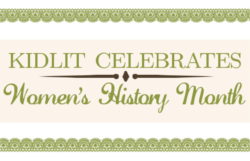March 8 - Today's post provided by Carolyn Meyer
For the past 20 years I have been writing novels about women—some famous (Mary, Elizabeth, Anne Boleyn--all those Tudor queens!), some not so famous (Mozart’s sister, Shakespeare’s wife)—and their place in history. What has fascinated me in every case is not who they became, which is why we recognize their names and want to read about them, but who they were when they were young. I am familiar with the myths. Consider Marie-Antoinette, for example—a terrible, selfish queen who regularly sent innocent people off to the guillotine while cruelly dismissing the starving French people with that famous line, “Let them eat cake!” Right?
She never said it. Furthermore, Marie-Antoinette was not responsible for anyone’s execution. Although it’s true that she was naïve and insensitive to the harsh conditions under which the common people lived, and that she spent way too much money on gorgeous clothes and fabulous gardens and pleasure houses, she was not a monster. Far from it.
Marie-Antoinette was once a frightened child who could not please her stern mother, at fourteen sent far from home to marry a boy she’d never met, then criticized and manipulated by older women who resented her and were determined to bring about her downfall.
This young and vulnerable princess was the Marie-Antoinette in whom I was willing and eager to invest over a year of intense research (OK, there was a trip to Paris, so the research wasn’t all grueling), and of writing and rewriting THE BAD QUEEN.
Consider, too, Catherine de’ Medici, who has still not lived down her reputation for mercilessness, but when you examine her family, including a dastardly cousin and her uncle the pope who sent her off, another 14-year-old, to marry a man who could not bring himself to sleep with her, it’s easier to understand her complex personality. DUCHESSINA is my attempt to show another Catherine behind the one we love to hate. (Besides, Italy is a lovely place to visit.)
Although many of my books have been about queens, I have sometimes become caught up in the lives of less exalted creatures. Anne Hathaway was eight years older than that young scamp, Will Shakespeare, but she succumbed to his charms, poetic and otherwise, and long before Will the glove-maker became SHAKESPEARE, the rich and famous playwright, they were married. I regret to say that it was not the happiest of marriages. Anne narrates their story in LOVING WILL SHAKESPEARE, and through her we get to know quite a lot about him. (Stratford-upon-Avon, the English village where they grew up, is a charming place to explore.)
Many readers are surprised to learn that Wolfgang Amadeus Mozart, the musical genius, had a talented older sister, Nannerl. But Nannerl had everything going against her: women of her era were not permitted careers as pianists, no matter how accomplished; her domineering father poured all the Mozart family resources into promoting his bratty, brilliant son—and to make matters worse, forced Nannerl into marriage to a man she didn’t love. I wrote IN MOZART’S SHADOW to allow her to tell her own story and to give her the attention she deserves.
I have explored the early lives of a dozen other women in history who have been loved or hated, misunderstood or ignored, and always I have focused on them as very young women. My latest novel, CLEOPATRA CONFESSES, is finally finished (and I confess that a trip to Egypt with a Nile cruise was part of the research). Unlike Marie-Antoinette and Nannerl Mozart, about whom much material is easily available to even the laziest researcher, Cleopatra remains a mystery. Images of Elizabeth Taylor in a movie version of the Egyptian queen’s story still float around in my head. Many have heard the tale of Cleopatra being delivered to Julius Caesar wrapped in a rug (it’s true), and much has been written about her affair with Mark Anthony. (Shakespeare wrote a play about the lovers.) But what must it have been like for her as a little princess, growing up in a palace in Alexandria, desperately trying to avoid her jealous older sisters while her father journeyed far from home? How did she manage to survive in a culture where family members plotted against each other as they strove for power and wealth?
Cleopatra tells her own story in the novel to be published in June.
Editors Note:
Find out more about Carolyn Meyer at her website. the site features information on her many best-selling books, school visit information, tips for writers, biographical information, and much more!
Editors Note:
Find out more about Carolyn Meyer at her website. the site features information on her many best-selling books, school visit information, tips for writers, biographical information, and much more!

















Thanks for your fascinating post! I'm still rooting for you to write a YA novel on Mary Todd Lincoln--there don't seem to be any out there except the one that focused on her and her dressmaker. I'm looking for one about her courtship with Abe!
ReplyDeleteLike you, I have a lot of interest in the younger lives of those famous (and not-so-famous) folk that we all think we know so well. Thanks also for sharing about the research that goes into books like these; sometimes our young writers are surprised to learn that authors of historical fiction actually have to dig for facts. "Don't they just make it all up?" Sheesh.
ReplyDelete